ناموجود
CMV Real-TM Quant Real-TM,sacace -100 t
Sacace™ CMV Real-TM Quant VER 02.02.2022 For Professional Use Only CMV Real-TM Quant Handbook Real Time PCR test for quantitative detection of Cytomegalovirus (CMV) REF V7-100/2FRT 100 For in Vitro Diagnostic Use Sacace™ CMV Real-TM Quant VER 02.02.2022 INTENDED USE CMV Real-TM Quant PCR kit is an in vitro nucleic acid amplification test for qualitative detection and quantification of human cytomegalovirus (CMV) DNA in the clinical materials (peripheral blood plasma, amniotic fluid, cerebrospinal fluid (liquor), bronchoalveolar lavage, whole human blood, white blood cells and viscera biopsy material) by using real-time hybridization-fluorescence detection. The results of PCR analysis are taken into account in complex diagnostics of disease. PRINCIPLE OF PCR DETECTION CMV determination by the polymerase chain reaction (PCR) with hybridization fluorescent detection includes three stages: DNA extraction from clinical samples, PCR-amplification of pathogen genome specific region, and real-time hybridization fluorescent detection. DNA is extracted from peripheral blood plasma, amniotic fluid, cerebrospinal fluid (liquor), saliva, oropharyngeal swabs, urine samples, bronchoalveolar lavage, whole human blood, white blood cells, and viscera biopsy material in presence of Internal Control (IC), which allows monitoring of analysis of each sample. Endogenous internal control (IC Glob – β-globin gene DNA) allows monitoring of PCR analysis stages (DNA extraction and PCR amplification), material sampling and storage adequacy. Then, CMV DNA is amplified using specific primers and polymerase (TaqF). β-globin gene DNA is a part of human genome DNA and it should be present in an adequate amount in DNA sample, obtained from the cells. There must be no less than 20 000 genomes per sample (DNA from 10 000 cells). Internal Control (IC), added during the sample preparation from amniotic liquid, bronchial lavages and other cell free or low in DNA content materials, serves as an amplification control for each individually processed specimen and to identify possible reaction inhibition, while endogenous IC (β-globine gene), present in all samples obtained from cells (whole blood, leucocytes, biopsy and autopsy material) allows not only to control analysis steps, but also to estimate sample handling and storage. In real-time PCR, the amplified product is detected using fluorescent dyes. These dyes are linked to oligonucleotide probes which bind specifically to the amplified product during thermocycling. The real-time monitoring of the fluorescence intensities during the real-time PCR allows the detection of accumulating product without re-opening the reaction tubes after the PCR run. CMV Real-TM Quant PCR kit uses “hot-start”, which greatly reduces the frequency of nonspecifically primed reactions. “Hot-start” is guaranteed by separation of nucleotides and Taq-polymerase by using a chemically modified polymerase (TaqF). Chemically modified polymerase (TaqF) is activated by heating at 95ºC for 15 min. Sacace™ CMV Real-TM Quant VER 02.02.2022 MATERIALS PROVIDED Reagent Description Volume (ml) Quantity PCR-mix-1-FRT CMV colorless clear liquid 0.6 2 tubes PCR-mix-2-FRT colorless clear liquid 0.3 2 tubes Polymerase (TaqF) colorless clear liquid 0.03 2 tubes RNA-buffer colorless clear liquid 0.6 1 tube DNA calibrator QS1 colorless clear liquid 0.2 1 tube DNA calibrator QS2 colorless clear liquid 0.2 1 tube RNA-buffer colorless clear liquid 1.2 1 tube Negative Control (C–) * colorless clear liquid 1.2 2tubes Positive Control DNA CMV/ human DNA ** colorless clear liquid 0.1 2 tubes Internal Control (IC) *** colorless clear liquid 0.6 2 tubes Contains reagents for 110 tests. * must be used in the extraction procedure as Negative Control of Extraction: add 100 µl of Negative Control C– to labeled NCE tube; ** must be used in the extraction procedure as Positive Control of Extraction (PCE): add 90 µl of Negative Control C– and 10 µl of Positive Control DNA CMV/human DNA to the tube labeled PCE; *** add 10 µl of Internal Control (IC) during the DNA extraction procedure directly to the sample/lysis mixture (see DNA/RNA Prep REF K2-9 or DNA-sorb-В REF K-1-1/B/100 protocols). Sacace™ CMV Real-TM Quant VER 02.02.2022 MATERIALS REQUIRED BUT NOT PROVIDED • DNA extraction kit. • Transport medium. • Disposable powder-free gloves. • Pipettes (adjustable). • Sterile pipette tips with aerosol barriers. • Disposable polypropylene 1,5/2,0 ml tubes. • Tube racks. • Vortex mixer. • Desktop centrifuge with rotor for 1,5/2,0 ml tubes. • PCR Workstation. • Real Time Thermal cycler. • Disposable polypropylene microtubes for PCR. • Refrigerator for 2–8 °C. • Deep-freezer for ≤ –16 °C. • Waste bin for used tips. QUALITY CONTROL In accordance with Sacace’s ISO 13485-Certified Quality Management System, each lot is tested against predetermined specifications to ensure consistent product quality. PRODUCT USE LIMITATIONS All reagents may exclusively be used in in vitro diagnostics. Use of this product should be limited to personnel trained in the techniques of DNA amplification (UNI EN ISO 18113- 2:2012). Strict compliance with the user manual is required for optimal PCR results. Attention should be paid to expiration dates printed on the box and labels of all components. Do not use a kit after its expiration date. Sacace™ CMV Real-TM Quant VER 02.02.2022 WARNINGS AND PRECAUTIONS In Vitro Diagnostic Medical Device For In Vitro Diagnostic Use Only 1. Wear disposable gloves, laboratory coats and eye protection when handling specimens and reagents. Thoroughly wash hands afterward. 2. Do not pipette by mouth. 3. Do not eat, drink, smoke, apply cosmetics, or handle contact lenses in laboratory work areas. 4. Do not use a kit after its expiration date. 5. Dispose of all specimens and unused reagents in accordance with local regulations. 6. Biosafety Level 2 should be used for materials that contain or are suspected of containing infectious agents. 7. Clean and disinfect all spills of specimens or reagents using a disinfectant such as 0,5% sodium hypochlorite, or other suitable disinfectant. 8. Avoid contact of specimens and reagents with the skin, eyes and mucous membranes. If these solutions come into contact, rinse immediately with water and seek medical advice immediately. 9. Material Safety Data Sheets (MSDS) are available on request. 10.Use of this product should be limited to personnel trained in the techniques of DNA amplification. 11.PCR reactions are sensitive to contamination. Measures to reduce the risk of contamination in the laboratory include physically separating the activities involved in performing PCR in compliance with good laboratory practice. 12.Workflow in the laboratory must proceed in a uni-directional manner, beginning in the Extraction Area and moving to the PCR and Detection Area. Do not return samples, equipment and reagents in the area where you performed previous step. Some components of this kit contain sodium azide as a preservative. Do not use metal tubing for reagent transfer. Sampling of biological materials for PCR-analysis, transportation, and storage are described in details in the handbook of the manufacturer. It is recommended that this handbook is read before beginning of the work. STORAGE INSTRUCTIONS The components of CMV Real-TM Quant PCR kit must be stored at 2–8 ºC excepting Polymerase (TaqF), PCR-mix-1-FRT CMV and PCR-mix-2-FRT that must be stored at – 16°C or below. The kit can be shipped at 2-8°C for no longer than 5 days but should be stored at -16°C or below immediately on receipt. Sacace™ CMV Real-TM Quant VER 02.02.2022 STABILITY CMV Real-TM Quant is stable up to the expiration date indicated on the kit label. The product will maintain performance through the date printed on the label. Exposure to light, heat or humidity may affect the shelf life of some of the kit components and should be avoided. Repeated thawing and freezing of these reagents should be avoided, as this may reduce the sensitivity. The shelf life of reagents before and after the first use is the same, unless otherwise stated. SAMPLE COLLECTION, STORAGE AND TRANSPORT CMV Real-TM Quant can analyze DNA extracted from: • Whole peripheral and umbilical blood • Liquor (CSF) collected in the sterile “Eppendorf” tube: o Liquor may be stored at 2-8°C for 1 days. Alternatively, may be stored at -18°C for up to one month or 1 year when stored at -70°C • Amniotic liquid collected in the sterile “Eppendorf” tube: • centrifuge 1,0 ml of sample at 8000-9000 x g for 10 min. Discard the supernatant and leave about 200 µl of solution. Vortex the the tube and use 100 µl for DNA extraction. • White blood cells. Collect 2.5-10 ml blood samples according to standard procedures in tubes containing anticoagulant (recommended anticoagulant is EDTA). Centrifuge samples at ~1500-2000 X g for 10-15 min. This will separate the blood into an upper plasma layer, a lower red blood cell (RBC) layer, and a thin interface containing the WBCs, also called the buffy coat. Remove the plasma with a transfer pipet, being careful not to disturb the WBCs. Samples with exceptionally high WBC counts will have a thicker buffy coat. Use transfer pipet to carefully aspirate the exposed WBC layer in a volume of about 0.5 ml or less. Aspirate slowly, using a circular motion, to pull all the visible buffy coat material into the transfer pipet. Some contamination of the WBCs with the underlying RBCs is expected. Add 300 μl of Solution for Lysis to the tube with the obtained leukocyte sample (for DNA/RNA-Prep protocol). Specimens can be stored at +2-8°C for no longer than 12 hours, or freeze at -20°C to -80°C. Transportation of clinical specimens must comply with country, federal, state and local regulations for the transport of etiologic agents. Sacace™ CMV Real-TM Quant VER 02.02.2022 DNA ISOLATION Any commercial RNA/DNA isolation kit, if IVD-CE validated for the specimen types indicated herein at the “SAMPLING AND HANDLING” paragraph, could be used. Sacace Biotechnologies recommends to use the following kits: ⇒ DNA/RNA-prep, REF K-2-9; ⇒ DNA-sorb-В, REF K-1-1/B/100; Please carry out the DNA extraction according to the manufacturer’s instructions. Add 10 μl of Internal Control (IC) during the DNA isolation procedure directly to the sample/lysis mixture. REAGENTS PREPARATION (REACTION VOLUME 25 µL): The total reaction volume is 25 µl, the volume of DNA sample is 10 µl. Unfreeze PCR-mix-2-FRT before mixing. 1. Prepare the required number of the tubes for amplification of DNA from clinical and control samples. • Note that for analysis of even one clinical DNA sample in the qualitative format, it is necessary to run two controls of PCR amplification stage: positive control (DNA calibrator QS2) and negative control of amplification (RNA-buffer). For analysis of even one clinical DNA sample in the quantitative format, it is necessary to run five controls of PCR amplification stage: two calibrators (QS1 and QS2) in two replicates and the negative control of amplification (RNA-buffer). In addition, you should take reagents for one extra reaction. 2. Prepare the mixture of PCR-mix-2-FRT and Polymerase (TaqF). For this purpose, transfer the content of the tube with Polymerase (TaqF) (30 μl) into the tube with PCR-mix2-FRT (300 μl) and mix by vortexing without foam forming. Mixture is to be stored at the temperature between 2 ºC and 8 ºC for 3 months. Use when needed. If the mixture can’t be used up for 3 months it’s necessary to prepare mixture for smaller number of reactions. For example, mix 150 μl of PCR-mix-2-FRT and15 μl of polymerase (TaqF). 3. Mix PCR-mix-1-FRT CMV with the mixture of PCR-mix-2-FRT and Polymerase (TaqF) prepared before in a new tube in the following proportion: 10 µl of PCR-mix-1-FRTCMV, 5 µl of PCR-mix-2-FRT and Polymerase (TaqF) Calculate the required number of reactions for the clinical and control samples. Sacace™ CMV Real-TM Quant VER 02.02.2022 If 60 samples are analyzed simultaneously, you can use a simplified version of mixture preparation: transfer the content of the tube with Polymerase (TaqF) (30 μl) into the tube with PCR-mix-2-FRT (300 μl) and add the whole content to the tube with PCR-mix-1-FRT CMV. 4. Take the required quantity of tubes for amplification of clinical and control DNA samples. Transfer 15 µl of the prepared mixture to each tube. 5. Add 10 µl of DNA obtained from clinical or control samples to the tubes with the reaction mixture. 6. For qualitative analysis: Negative Control of Amplification – Add 10 µl of RNA-buffer to the tube labeled NCA (Negative Control of Amplification). Positive Control of Amplification – Add 10 µl of DNA calibrator QS2 to the tube labeled C+ (Positive Control of Amplification). For quantitative analysis: Negative Control of Amplification – Add 10 µl of RNA-buffer to the tube labeled NCA (Negative Control of Amplification). DNA calibrators QS1 & QS2 – Add 10 µl of DNA calibrator QS1 to two tubes and 10 µl of DNA calibrator QS2 to two other tubes. Amplification Create a temperature profile on your instrument as follows: Step Rotor type instruments1 Plate or modular type instruments2 Temperature, °С Time Cycles Temperature, °С Time Cycles Hold 95 15 min 1 95 15 min 1 Cycling 95 5 sec 5 95 5 sec 60 20 sec 60 20 sec 5 72 15 sec 72 15 sec Cycling 2 95 5 sec 40 95 5 sec 60 40 20 sec fluorescence detection 60 30 sec fluorescence detection 72 15 sec 72 15 sec Fluorescence is detected on the 2nd step (60°C) in FAM/Green, HEX/JOE/Cy3 Yellow and ROX/Orange/Texas Red fluorometer channels. 1 For example, Rotor-Gene 3000/6000™ (Qiagen), or equivalent. 2 For example, iCycler iQ5™ (BioRad); Mx3000P™ (Agilent) or equivalent. Sacace™ CMV Real-TM Quant VER 02.02.2022 INSTRUMENT SETTINGS (Rotor-Gene 6000/Q) Rotor-type instruments Channel Calibrate/Gain Optimisation… Threshold More Settings/ Outlier Removal Slope Correct FAM/Green from 5 Fl to 10 Fl 0.03 10 % On JOE/Yellow from 5 Fl to 10 Fl 0.03 10 % On ROX/Orange from 5 Fl to 10 Fl 0.03 10 % On Plate- or modular type instruments The threshold line should cross only sigmoid curves of signal accumulation of positive samples and should not cross the baseline; otherwise, the threshold level should be raised. Set the threshold at a level where fluorescence curves are linear and do not cross curves of the negative samples. DATA ANALYSIS β-Globin gene DNA (IC Glob) is detected in the FAM/Green channel, CMV DNA (Positive Control DNA CMV and human DNA) is detected in the JOE/HEX/Yellow channel, Internal Control STI-87 (IC) DNA is detected in the ROX/Orange channel. • If total DNA from cell suspension (whole human blood, white blood cells, viscera biopsy material) is isolated, the results are detected in two channels: β-globin gene DNA (IC Glob) in the FAM/Green channel, CMV DNA in the JOE/HEX/Yellow/Cy3 channel. • If total DNA from peripheral blood plasma, amniotic fluid, cerebrospinal fluid (liquor), saliva, oropharyngeal swabs, urine samples, and bronchoalveolar lavage are isolated with internal control sample, the results are detected in two channels: CMV DNA is detected in the JOE/Yellow/HEX/Cy3 channel, Internal Control (IC) DNA is detected in the ROX/Orange/Texas Red channel. Sacace™ CMV Real-TM Quant VER 02.02.2022 RESULTS INTERPRETATION The results are interpreted by the software of the PCR instrument used by the crossing (or not crossing) of the fluorescence curve with the threshold line. If total extracted DNA is obtained from cell suspension (whole human blood, white blood cells, viscera biopsy material), the results are interpreted as follows: 1. The sample is considered to be positive for CMV DNA if a Ct value in the JOE/Yellow/HEX/Cy3 channel, which does not exceed the Ct value of the positive result (Ct < 38), is defined in the results grid. The fluorescence curve should cross the threshold line in the exponential growth region. 2. For qualitative analysis, the sample is considered to be negative for CMV DNA if its Ct value is not defined in the results grid (the fluorescence curve does not cross the threshold line) in the JOE/HEX/Yellow/Cy3 channel and the Ct value in the results grid in the FAM/Green channel does not exceed 38. For quantitative analysis, the sample is considered to be negative for CMV DNA if its Ct value is not defined in the results grid (the fluorescence curve does not cross the threshold line) in the JOE/HEX/Yellow channel and the quantity of IC Glob DNA is greater than 2000 copies per reaction. 3. For qualitative analysis, the analysis result is considered to be invalid if the Ct value is not defined in the results grid (the fluorescence curve does not cross the threshold line) in the JOE/HEX/Yellow channel and the Ct value in the results grid in the FAM/Green channel exceeds the Ct 38. For quantitative analysis, the result of analysis is considered to be invalid if the Ct value is not defined in the results grid (the fluorescence curve does not cross the threshold line) in the JOE/HEX/Yellow/cy3channel and the quantity of IC Glob DNA is less than 2000 copies per reaction. In such cases, PCR analysis of the sample should be repeated. 4. For clinical samples whose Ct values in the JOE/Yellow/HEX/Cy3 channel exceed the boundary Ct value (> 38), the result is considered to be equivocal. Such DNA samples should be additionally analyzed in duplicate. If a reproducible positive Ct value is obtained, the result should be considered as positive. If Ct values are not reproduced in two replicates, the result is considered as equivocal. For qualitative analysis, if the Ct value in the FAM/Green channel exceeds 38, the negative result is considered to be invalid. For quantitative analysis, if the quantity of IC Glob DNA is less than 2000 copies/reaction then the quantitative positive or negative result is considered to be invalid. Results of analysis are accepted as relevant if the results obtained for positive and negative controls of amplification and the negative control of extraction are correct. For quantitative analysis, the results for C+ should fall into the concentration range indicated in the Data Sheet CMV Real-TM Quant. Sacace™ CMV Real-TM Quant VER 02.02.2022 Results for controls for extracted DNA from cell suspension (whole human blood, white blood cells, and viscera biopsy material) Control Stage for control Ct in channel FAM/Green JOE/HEX/Yellow Interpretation Qualitative format Quantitative format Qualitative format Quantitative format NCE DNA extraction, amplification Neg Neg Neg Neg OK PCE DNA extraction, amplification Pos (< boundary value) Pos (< boundary value) Pos (< boundary value) Ct value is in the range indicated in Data Sheet OK NCA Amplification Neg Neg Neg Neg OK C+ Amplification Pos (< boundary value) – Pos (< boundary value) – OK QS1,QS2 Amplification – Ct value and calculated concentration are determined – Ct value and calculated concentration are determined OK For quantitative analysis, the concentration in log of CMV DNA copies per standard cell quantity (105) in control and clinical samples (whole human blood, white blood cells, viscera biopsy material) is calculated by following formula: log { CMV DNA copies in PCR sample x 2*105 }= log {CMV DNA copies/105 cells}. Glob DNA copies in PCR sample To express relative CMV DNA concentration in copies per the standard cell quantity (e.g., for 105), use the following recalculation ratio: 105 cells = 2*105 human genomic equivalents If total extracted DNA is obtained from peripheral blood plasma, amniotic fluid, cerebrospinal fluid (liquor), saliva, oropharyngeal swabs, urine samples, and bronchoalveolar lavage and isolated together with the Internal Control (IC), the results are interpreted as follows: 1. The sample is considered to be positive for CMV DNA if a Ct value in the JOE/Yellow/HEX/Cy3 channel, which does not exceed the Ct value of the positive result (< 38), is defined in the results grid. The fluorescence curve should cross the threshold line in the exponential growth region. 2. The sample is considered to be negative for CMV DNA if its Ct value is not defined in the results grid (the fluorescence curve does not cross the threshold line) in the JOE/HEX/Yellow/Cy3 channel and the Ct value in the results grid in the ROX/Orange/Texas Red channel is < 38. 3. The analysis result is considered to be invalid if the Ct value is not defined in the results grid (the fluorescence curve does not cross the threshold line) in the Sacace™ CMV Real-TM Quant VER 02.02.2022 JOE/HEX/Yellow/Cy3channel and the Ct value in the results grid in the ROX/Orange/Texas Red channel is > 38. PCR analysis of such clinical samples should be repeated. 4. For clinical samples whose Ct values in the JOE/Yellow/HEX/Cy3 channel exceed the boundary Ct value (38) the result is considered to be equivocal. Such DNA samples should be additionally analyzed in duplicate. If a reproducible positive Ct value is obtained, the result should be considered as positive. If Ct values are not reproduced in two replicates, the result is considered as equivocal. Results of analysis are accepted as relevant if the results obtained for positive and negative controls of amplification and the negative control of extraction are correct. For quantitative analysis, the results for C+ should fall into the concentration range indicated in the Data Sheet CMV Real-TM Quant. Results for controls for extracted DNA from peripheral blood, amniotic fluid, cerebrospinal fluid (liquor), bronchoalveolar lavage together with the Internal Control Control Stage for control Ct in channel JOE/HEX/Yellow/Cy3 ROX/Orange/Texas Red Interpretation Qualitative format Quantitative format Qualitative format Quantitative format NCE DNA extraction, amplification Neg Neg Pos (< boundary value) Pos (< boundary value) OK PCE DNA extraction, amplification Pos (< boundary value) Ct value is in the range indicated in Data Card Pos (< boundary value) Pos (< boundary value) OK NCA Amplification Neg Neg Neg Neg OK C+ Amplification Pos (< boundary value) – Pos (< boundary value) – OK QS1,QS2 Amplification – Ct value and calculated, concentration determined – Ct value and calculated, concentration determined OK For quantitative analysis, the concentration of CMV DNA (КP CMV DNA) per ml of sample for peripheral blood plasma, amniotic fluid, cerebrospinal fluid (liquor), saliva, oropharyngeal swabs, urine samples, and bronchoalveolar lavage is calculated by the following formula: КP CMV DNA = КCMV DNA/ КIC х IC coefficient (copies/ml) КCMV DNAis the number of CMV DNA copies in DNA sample; Кic is the number of ICDNA copies in DNA sample; IC coefficient corresponds to the number of ICDNA copies in DNA sample. It is specified in the Data Sheet CMV Real-TM Quant provided with each lot of the reagent kit. This coefficient is specific for each lot. Sacace™ CMV Real-TM Quant VER 02.02.2022 CMV Real-TM Quant PCR kit is a test which contains the Internal Control IC (human betaglobine gene), which allows to control the presence of cellular material in the sample. If the sample is not correctly prepared or it is an insufficient quantity of epithelial cells the Internal Control will not be detected. A negative control of extraction (NCE), positive control of extraction (PCE), negative amplification control (NCA), positive amplification control (C+) are required for every run to verify that the specimen preparation, the amplification and the detection steps are performed correctly. If the controls are out of their expected range (see table Results for Controls), all of the specimens and controls from that run must be processed beginning from the sample preparation step. PERFORMANCE CHARACTERISTICS Sensitivity Linear range of CMV Real-TM Quant PCR kit is 500–10.000.000 copies/ml. If the result is greater than 10.000.000 copies/ml, it is indicated as the result is more than 10.000.000 CMV DNA copies/ml. If the result is less than 500 copies/ml, it is indicated as the result is less than 500 CMV DNA copies/ml. The analytical sensitivity of CMV Real-TM Quant PCR kit is given in the table below. Type of clinical material Nucleic acid extraction kit Sensitivity Peripheral blood plasma, amniotic fluid, cerebrospinal fluid (liquor), bronchoalveolar lavage DNA/RNA-prep 400 copies/ml Whole human blood, white blood cells, viscera biopsy material DNA/RNA-prep 5 CMV DNA copies per 105 cells Specificity The analytical specificity of CMV Real-TM Quant PCR kit is ensured by the selection of specific primers and probes as well as stringent reaction conditions. The primers and probes have been checked for possible homologies to all sequences published in gene banks by sequence comparison analysis. CMV Real-TM Quant PCR kit is intended for human cytomegalovirus (CMV) DNA detection. Specific activity of CMV Real-TM Quant PCR kit was confirmed in studies of the CMV reference strain AD 169 as well as by analyzing clinical material with subsequent confirmation of results by sequencing the amplification fragments. The activity of the PCR kit components with respect to DNA of other viruses (Epstein-Barr virus, herpes simplex virus types 1 and 2, human herpes virus types 6 and 8, Varicella Zoster Virus, Parvovirus B19, Sacace™ CMV Real-TM Quant VER 02.02.2022 and others), bacterial pathogens (Staphylococcus aureus, Streptococcus pyogene, Streptococcus agalactiae, and others), and human DNA is absent. The clinical specificity of CMV Real-TM Quant PCR kit was confirmed in laboratory clinical trials. Target region Channel for fluorophore FAM JOE ROX DNA-target IC Glob CMV Internal Control STI-87 (IC) Target gene β-globin gene Pol gene genetically engineered construction QUALITY CONTROL PROCEDURE A defined quantity of Internal Control (IC) is introduced into each sample and control at the beginning of sample preparation procedure in order to control the extraction process of each individual sample and to identify possible reaction inhibition. A negative control of extraction (NCE), negative amplification control (NCA), positive amplification control (C+) are required for every run to verify that the specimen preparation, the amplification and the detection steps are performed correctly. If the controls are out of their expected range (see table Results for Controls), all of the specimens and controls from that run must be processed beginning from the sample preparation step. TROUBLESHOOTING Results of analysis are not taken into account in the following cases: 1. The presence of any Ct value in JOE/Yellow/HEX/Cy3, FAM/Green, and ROX/Orange/Texas Red channels in the results grid for the Negative Control of Amplification (NCA) and for the Negative Control of Extraction (C–) in JOE/Yellow/HEX/Cy3 channel indicates contamination of reagents or samples. In this case, PCR analysis should be repeated for all samples where CMV DNA was detected starting from the DNA extraction stage. 2. If, for qualitative analysis, the Ct value in the results grid for the Positive Control of Amplification (QS2) in JOE/Yellow/HEX/Cy3 (CMV), FAM/Green, or ROX/Orange/Texas Red channels is absent, it is necessary to repeat amplification for all samples where CMV DNA was not detected. 3. If the Ct value in the results grid for the Positive Control of Extraction (Positive Control DNA CMV and human DNA) in JOE/Yellow/HEX/Cy3 (CMV), FAM/Green, or Sacace™ CMV Real-TM Quant VER 02.02.2022 ROX/Orange/Texas Red channels is absent, the results of analysis of all samples are considered to be invalid. It is necessary to repeat PCR analysis for such samples. 4. If the Ct value for the sample in the JOE/Yellow/HEX/Cy3 channel is absent or exceeds the boundary Ct value and the Ct value for the sample is greater than the maximum Ct value for IC in FAM/Green and ROX/Orange channels, it is necessary to repeat the analysis starting from the DNA extraction stage. This error may be due to incorrect treatment of clinical material, which resulted in the loss of DNA, or to the presence of PCR inhibitors. 5. If the Ct value for the sample in the JOE/Yellow/HEX/Cy3 channel is absent or exceeds the boundary Ct value (> 38) and Ct value for the sample is less than the boundary Ct value in FAM/Green and ROX/Orange, the result is considered to be equivocal. It is necessary to repeat analysis of such samples in duplicate. If a reproducible positive Ct value is obtained, the result is considered to be positive; otherwise, the result is considered to be equivocal. Sacace™ CMV Real-TM Quant VER 02.02.2022 REFERENCES • PCR detection of cytomegalovirus DNA in serum as a diagnostic test for congenital cytomegalovirus infection.C T Nelson, A S Istas, M K Wilkerson, and G J Demmler. J ClinMicrobiol. 1995 December; 33(12): 3317–3318. • Detection of Cytomegalovirus DNA in Peripheral Blood of Patients Infected with Human Immunodeficiency Virus. D. Shibata, W. John Martin, Maria D. Appleman, Dennis M. Causey, J. M. Leedom, N. Arnheim. J Infect Dis. (1988) 158 (6): 1185-1192. • Multiplex PCR for six herpesviruses after hematopoietic stem cell transplantation. Sawada A, KoyamaSato M, Yasui M, Kondo O, Ishihara T, Takeshita Y, Okamura T, Nishikawa M, Inoue M, KawaPediatr Int. 2011 Aug 2. doi: 10.1111/j.1442-200X.2011.03437. • Cytomegalovirus Infections in Non-immunocompromised and Immunocompromised Patients in the Intensive Care Unit.Florescu DF, Kalil AC. Infect Disord Drug Targets. 2011 Jun 16. • Comparison of PCR, Antigenemia Assay, and Rapid Blood Culture for Detection and Prevention of Cytomegalovirus Disease after Lung Transplantation. Adriana Weinberg, Tony N. Hodges, Shaobing Li, GuanyungCai, M. R. Zamora. Journal of Clinical Microbiology, February 2000, p. 768-772, Vol. 38, No. 2 • Optimization of Quantitative Detection of Cytomegalovirus DNA in Plasma by Real-Time PCR. Michael Boeckh,MeeiLi Huang, James Ferrenberg, Terry Stevens-Ayers, Laurence Stensland, W. Garrett Nichols, and Lawrence Corey. Journal of Clinical Microbiology, March 2004, p. 1142-1148, Vol. 42, No. 3 • Quantification of Human Cytomegalovirus DNA by Real-Time PCR. ElyanneGault,Yanne Michel, AxelleDehée, ChahrazedBelabani, Jean-Claude Nicolas, Antoine Garbarg-Chenon. J ClinMicrobiol. 2001 February; 39(2): 772 • Definitions of Cytomegalovirus Infection and Disease in Transplant Recipients. Per Ljungman, Paul Griffiths, Carlos Paya, …Clin Infect Dis. (2002) 34 (8): 1094-1097 Sacace™ CMV Real-TM Quant VER 02.02.2022 KEY TO SYMBOLS USED * iCycler iQ5™ is a registered trademark of Bio-Rad Laboratories * Rotor-Gene™ is a registered trademark of Qiagen * MX3000P™ is a registered trademark of Agilent Technologies Sacace Biotechnologies Srl via Scalabrini, 44 – 22100 – Como – Italy Tel +390314892927 mail: info@sacace.com web: www.sacace.com List Number Caution! Lot Number Contains sufficient for tests For inVitro Diagnostic Use Version Store at NCA Negative Control of Amplification Manufacturer C– Negative control of Extraction Consult instructions for use C+ Positive Control of Amplification Expiration Date IC Internal Control
حمل و نقل کالا
درخواست محصول
.فقط مشتریانی که این محصول را خریداری کرده اند و وارد سیستم شده اند میتوانند برای این محصول دیدگاه(نظر) ارسال کنند.
محصولات پیشنهادی





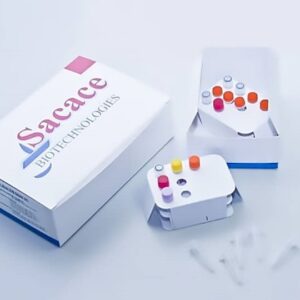
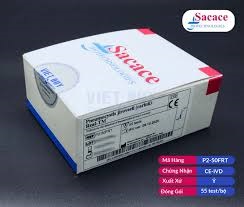


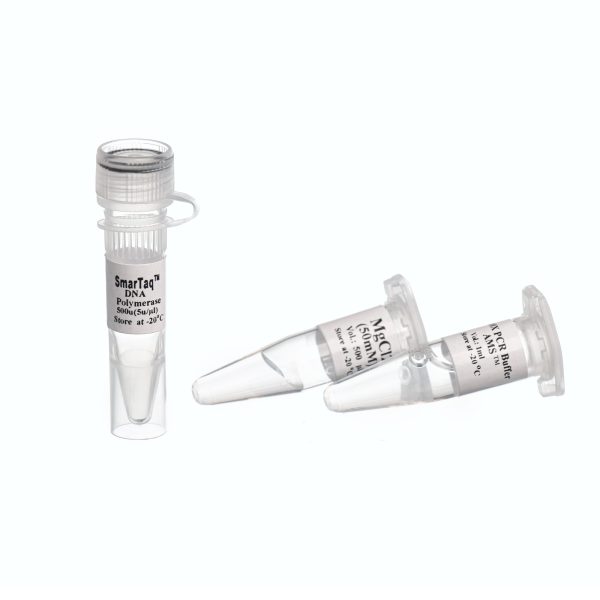
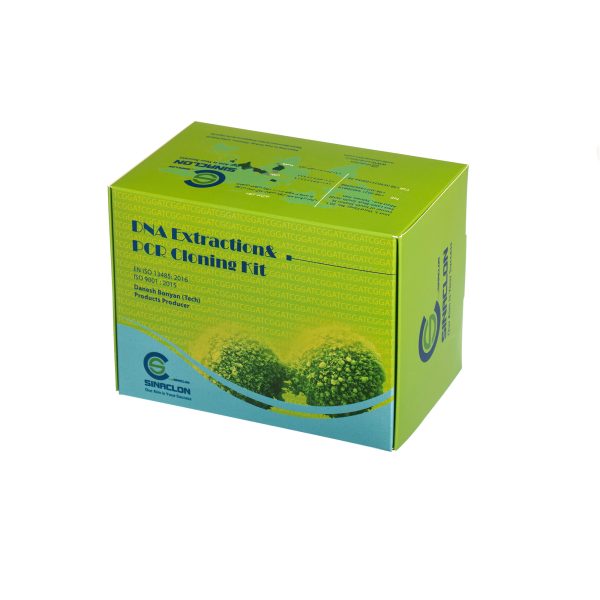

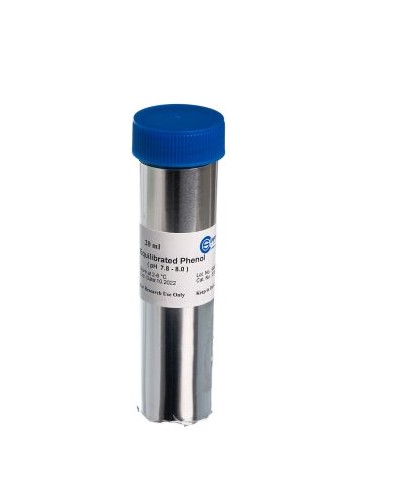
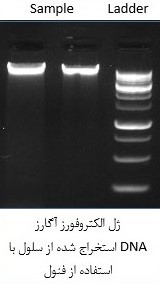
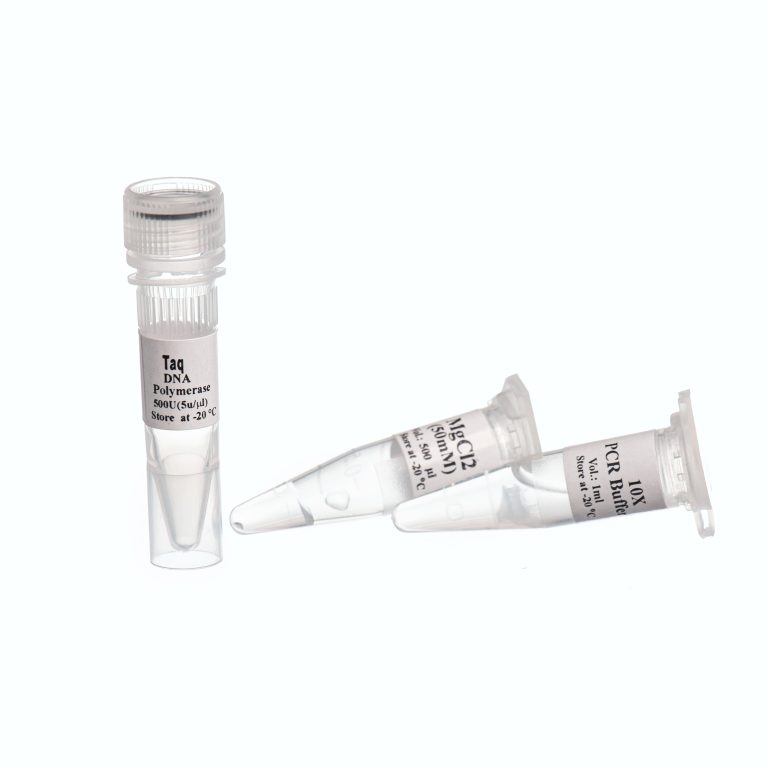
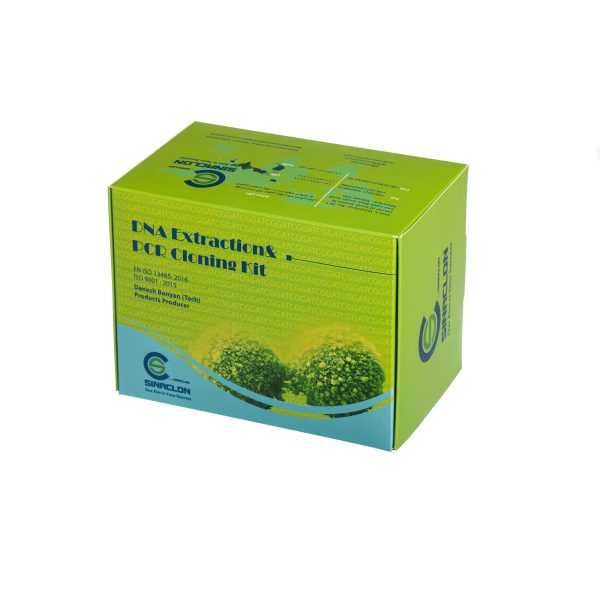
نقد و بررسیها
هنوز بررسیای ثبت نشده است.